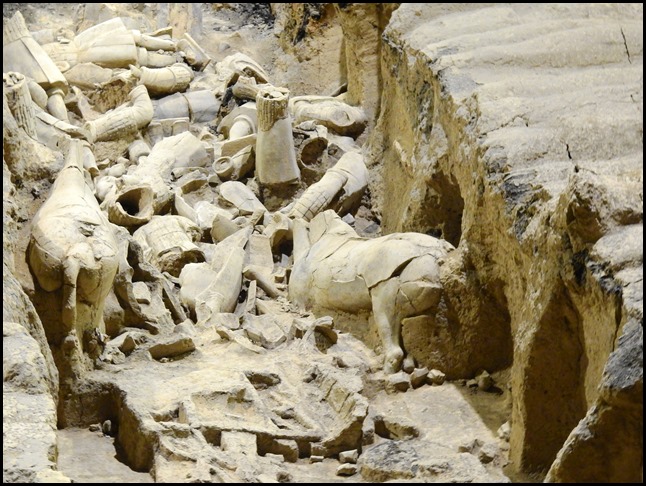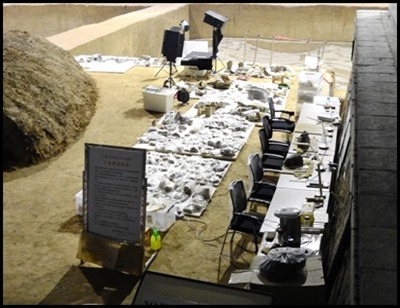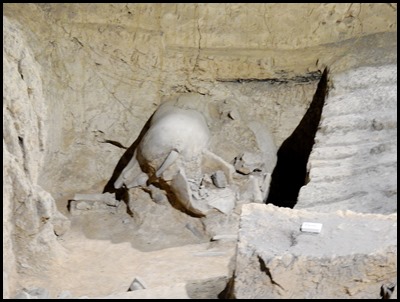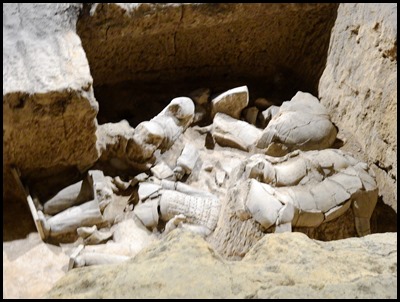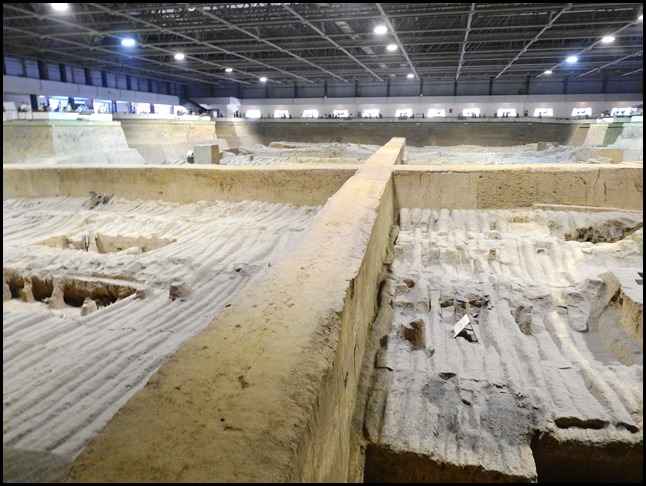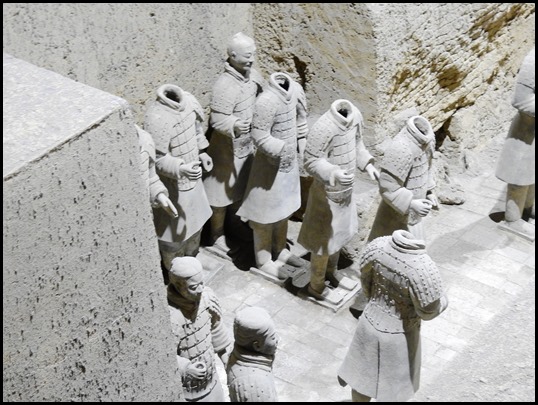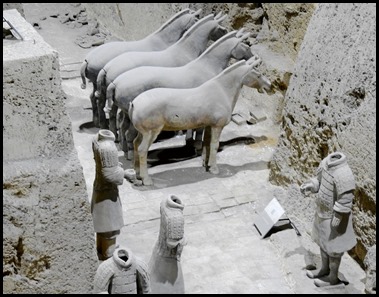TA Pit 3

|
Terracotta Army Pit
3
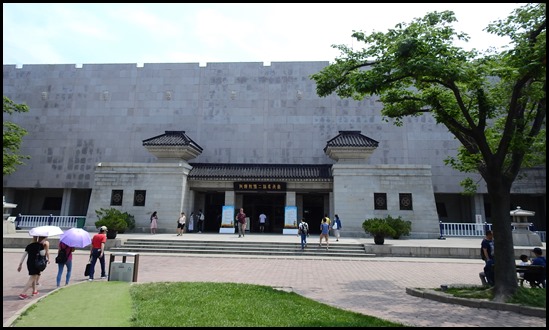  We bimbled over to Pit 3 as our second pit to explore. We thought nothing
could match Pit 1 but, although much smaller, this was very different and
spectacular in its own way.
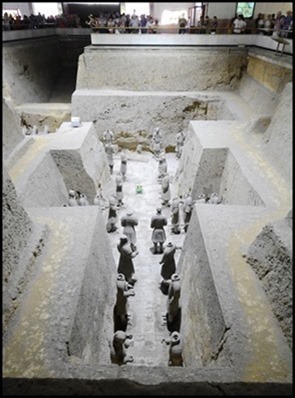 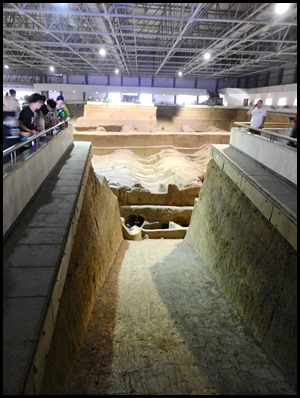 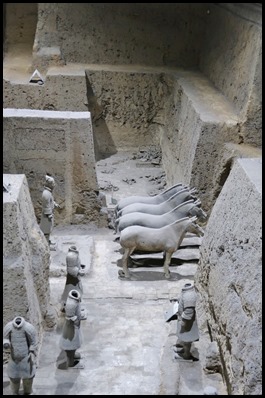 We loved this after finding it on a
Chinese tour site. Love the erected chest.........As the smallest pit, Pit
3, with high-ranking officers and a war chariot.
Outwardly, military officer figures are capped by double or single board hat in
various armours. Apart from the difference in clothes, the military officer
figures are somewhat different in spirit and bearing of the general figures. Not
as big and strong as that of the general figures, the military figures are tall
on the whole, with broad shoulders, erected chest and solemn look, showing their
quality in diligence thinking and courageous ability all the
more.
On the 11th May in 1976, archaeologists discovered Pit 3 in northwest of Pit 1. As the smallest one, Pit 3 is the command post which vary from both pit 1 and pit 2 in structure and content. It can divide into three parts – north, central and south. In the centre, it is a battle chariot with four horses and four warriors. There are also 64 warriors with heavy armour standing in both north and south. Both warriors in Pit 1 and Pit 2 are
arrayed in line of battle, but figurines in Pit 3 are standing face to face with
a passageway between them. Obviously, they are the guards of the command post.
These strong guards all wear heavy armours with vivid facial expressions, which
reflect peculiar spirit and character of ancient warriors.
Pit 3 gave us a real sense of what the restoration challenges are. Unearthing (still on-going) and then deciding whether to disturb or recover, a fine balance and what it involves when the decision is taken to remove artifacts and hand them over to the restorers.
The ‘hospital’ area where painstaking jigsaws have to be taken on. Sacks of earth that will either be returned to whence it came or used to build support walls.
We now fully understood the lines in which the army was placed and the support walls holding up the roof.
These chaps will stay as they are as they are too close to a support wall.
We gleaned just how mammoth a task this project has been and how deep the pit is.
The information board reads: The sculptural style of the pottery warriors and horses in Pit 3 impress the viewers with its realistic making. Different types of techniques are involved in making these statues, such as circular carving, relief carving, line carving and color painting. The pottery warriors and horses are delicately made and lifelike. The color pigments on the statues are basically survived, which provided the precious data for studying the color painting of the terra-cotta warriors. 30 bronze Shu, 4 bronze arrowheads, one piece of arrow-head-shaped weapon and one chariot were unearthed from Pit 3. The bronze Shu was originally one of the five weapons on the chariot. It was believed to be used by the guards of honor during the Spring and Autumn Period. The warriors were mainly holding bronze Shu, serving as the security guard for the chariot (made of wood and therefore only the horses remain). It is believed that these warriors did have heads when they were originally produced. Archaeologists speculated that at some point vandals broke into this pit and deliberately destroyed the warriors. During the archaeological excavation, a villager revealed that he dig out half of a warrior's head in the southern wall of what is now the Qin Terracotta Warriors Museum. He returned the head and archaeologists searched across the various body pieces for a match. Finally, they matched it to a warrior body discovered in the Pit 3. This is one example of how many of the heads have been lost outside of the pit. Absolutely thrilled to find the room in the corner where you can pose with the ‘boys’. Cheesy – who cares. I love this picture of My Birthday Boy
ALL IN ALL A MARVELLOUS PLACE TO VISIT LOVED POSING WITH MY NEW FRIENDS – OLDER THAN ME, HURRAH
. |
